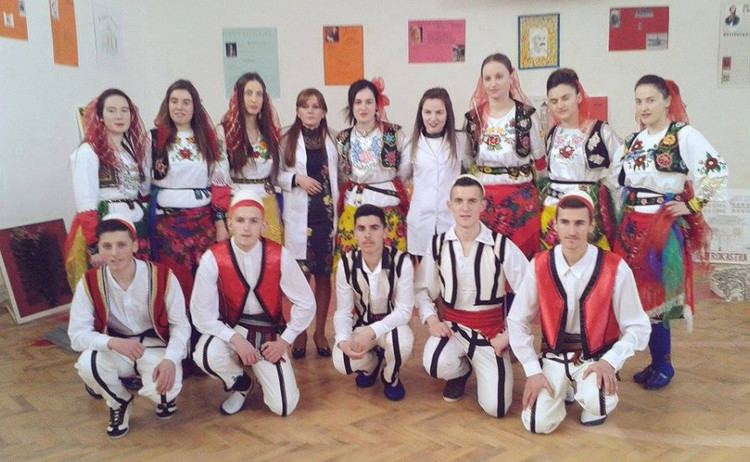 | ||
Traditional Albanian clothing (Albanian: veshjet tradicionale shqiptare, veshjet kombëtare, veshjet popullore ose kostumet kombëtare) includes more than 200 different kind of clothings in all Albania and Albanian inhabited lands. This is due to the division the Albanian principalities in the Middle Ages. The Albanian folk dress is often decorated with symbolic elements of antique pagan origin, like suns, eagles, moons, stars, and snakes. Almost every region in Albania has its own traditional dress with women clothing being particularly colorful and rich in detail. Fabrics are traditionally made by weaving clothes using looms. To this day, some conservative old men and women mainly from the North wear traditional clothing in their daily lives. Instead, older women from the South usually wear all-black outfits.
Contents
Parts
The Albanian Dress consist of the following elements:
Men
The following headdresses are in use for men:
For Women
The following headdress are in use for women:
Pants and upper body covers
Xhamadan
A Xhamadan is a traditional vest, which is worn by Albanian men throughout Albania, in Kosovo, the Republic of Macedonia, Serbia, Montenegro, and in the Arbëresh villages in Italy.
Brez
Brez are traditional belts, which are worn by Albanian men throughout Albania, in Kosovo, the Republic of Macedonia, Serbia, Montenegro, and in the Arbëresh villages in Italy.
Çorape
Çorape are traditional socks which are worn by Albanian men throughout Albania, in Kosovo, the Republic of Macedonia, Serbia, Montenegro, and in the Arbëresh villages in Italy.
Opinga
Opinga Albanian pronunciation: [ɔˈpiŋɡa]: (Art sandals), are traditional shoes which are worn by Albanian men throughout Albania, in Kosovo, the Republic of Macedonia, Serbia, Montenegro, and in the Arbëresh villages in Italy.
South Albania
South Albania has many branches that come from many cities on the South.
Vlora
In the region of Vlora, the traditional costume for men is like the picture on the right. They use the Qeleshe cap. Then they wear a short black jacket, followed by a white shirt with wide sleeves. They also have a kind of a belt which is red and black like the Albanian Flag. They have black pants with long white socks. For shoes, they wear Opinga which are worn in Albania, Romania and Serbia. The costumes are very colorful.
